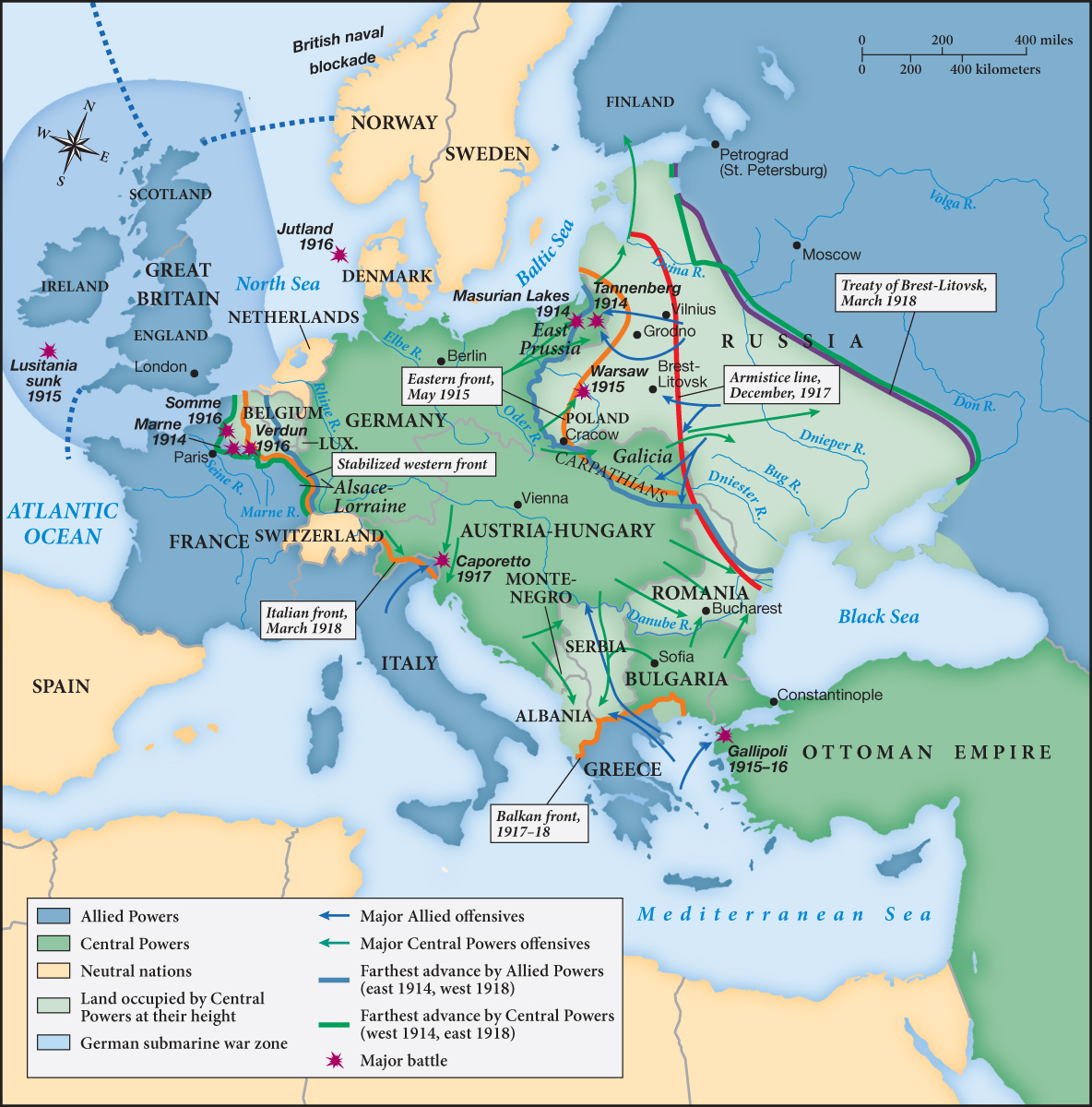Historical Background
Timeline
| June –July 1914 | Rapidly deteriorating political tensions lead to outbreak of World War I in Europe; United States declares its neutrality. |
| August 1914–April 1917 | United States remains officially neutral, but public opinion gradually turns against Germany and in favor of the Allied Powers. |
| April 6, 1917 | The U.S. Congress declares war on Germany. |
| Woodrow Wilson appoints a war council of American business executives to lead the American Red Cross during the war. | |
| April 13, 1917 | Woodrow Wilson creates the Committee on Public Information and appoints George Creel to lead it. |
| June 26, 1917 | First wave of U.S. troops arrive in France; more than 2 million will eventually serve in Europe. |
| January 8, 1918 | President Woodrow Wilson proposes his “Fourteen Points” program for peace. |
| November 11, 1918 | Signing of the Armistice ends hostilities. |
| June 28, 1919 | Peace Treaty (Treaty of Versailles) is signed. |
| March 19, 1920 | U.S. Senate rejects Treaty of Versailles. |
On July 28, 1914, the First World War erupted in Europe. For over four years, the conflict persisted. Hostilities finally concluded on November 11, 1918. Although the United States eventually entered the war on the side of Great Britain, France, and other Allied Powers, the nation officially remained neutral for nearly three years, for several reasons. Historically, U.S. policymakers had attempted to avoid becoming entangled in European affairs; many continued to support this principle of nonintervention. Much of the U.S. public preferred peace as well, not eager to participate in the carnage.
Yet as war dragged on, public opinion gradually turned in favor of the Allied Powers and against Germany and its fellow Central Powers. Many Americans, including President Woodrow Wilson, came to believe that the United States must help end the conflict and then take the lead in forging a lasting peace. Motivated by this logic, U.S. government officials and private citizens increasingly began to favor military intervention on behalf of the Allies. Public support, however, was by no means universal. Even by the time the United States entered the war in April 1917, many Americans remained opposed to joining.
To counter this resistance and to generate enthusiasm for the war effort, the Wilson administration created an agency called the Committee on Public Information (CPI) and charged it with mobilizing public support. It also relied on such humanitarian organizations as the American Red Cross and Young Men’s Christian Association (YMCA) to rally the public. In a climate of wartime patriotism, these organizations largely echoed the U.S. government’s official publicity, thus complementing the CPI’s efforts.
Together, these agencies orchestrated a major public relations campaign, designed to convince the American public to support both the war effort and American international engagement. Publicity makers used diverse forms of mass media to fulfill their mission, including films, speakers, and magazine advertisements, but perhaps the most iconic of these was the poster. Posters relied on stunning visual imagery and few—if any—words in their attempts to persuade. They appealed to viewers’ patriotism, their emotions, and their identities. They urged Americans to enlist in the military or to volunteer in other ways, to save food and to buy Liberty Bonds, to aid the Allies and to despise the enemy. Viewers, significantly, did not always interpret posters in the way their producers had intended. Nevertheless, posters played an important part in nurturing a wartime culture of American internationalism.
The Fronts of World War I, 1914–1918
